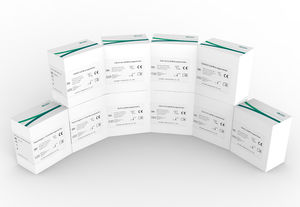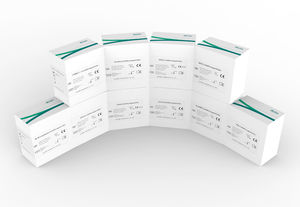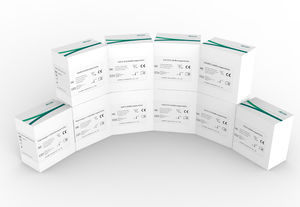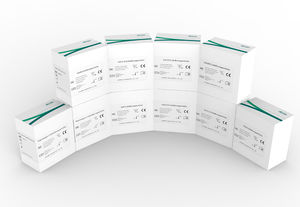
- Laboratory
- Laboratory medicine
- Cancer test kit
- Autobio Diagnostics
Cancer test kit oncologyCEACA 19-9
Add to favorites
Compare this product
fo_shop_gate_exact_title
Characteristics
- Applications
- for cancers
- Application field
- oncology
- Tested parameter
- CEA, CA 19-9, CA 50
- Micro-organism
- Helicobacter pylori
- Sample type
- clinical, serum
Description
Gastric cancer was the fourth common cancer worldwide, and it was the second most common cause of death from cancer [1]. Gastric cancer can generally be classified into two topographical subsites, the cardia (upper stomach) and noncardia (lower stomach). Chronic Helicobacter pylori infection is considered the principal cause of noncardia gastric cancer, with almost all cases attributed to this bacterium. Meanwhile, cardia gastric cancer is considered to be linked to H. pylori infection, excess body weight and gastroesophageal reflux disease injury [2].Early detection is important for improving the survival rate of patients with gastric cancer (GC).
Some serum tumor markers including CEA, CA19-9, CA50, and CA72-4 have been reported to be elevated in some patients with gastric cancer [3–5].
Clinical Significance
In advanced or recurrent gastric cancer, the estimation of either CA 19-9 or CA-50 and CEA serum values may help in checking the prognosis, determining the efficacy of palliative treatment modalities, and recognizing recurrences. [6]
CA72-4 is highly sensitive to gastric cancer, and the positive rate of serum CA72-4 in gastric cancer is reported to be 36% to 94%. And its specificity is also high, some of which even reach 100%.[7]CA72-4 can be used to detect whether there are residual tumor cells after operation and judge the prognosis of gastric cancer.[8]
Catalogs
No catalogs are available for this product.
See all of Autobio Diagnostics‘s catalogsRelated Searches
- Autobio test kit
- Solution reagent kit
- Autobio blood test kit
- Autobio serum test kit
- Plasma assay kit
- Infectious disease detection kit
- Diagnostic reagent kit
- Respiratory infection test kit
- Autobio clinical test kit
- COVID-19 detection kit
- Clinical chemistry analyzer
- Bacteria reagent kit
- Antigen assay kit
- Automatic clinical chemistry analyzer
- Autobio cancer test kit
- Clinical reagent kit
- Benchtop clinical chemistry analyzer
- IgG test kit
- Laboratory detection kit
- Autobio cell test kit
*Prices are pre-tax. They exclude delivery charges and customs duties and do not include additional charges for installation or activation options. Prices are indicative only and may vary by country, with changes to the cost of raw materials and exchange rates.









